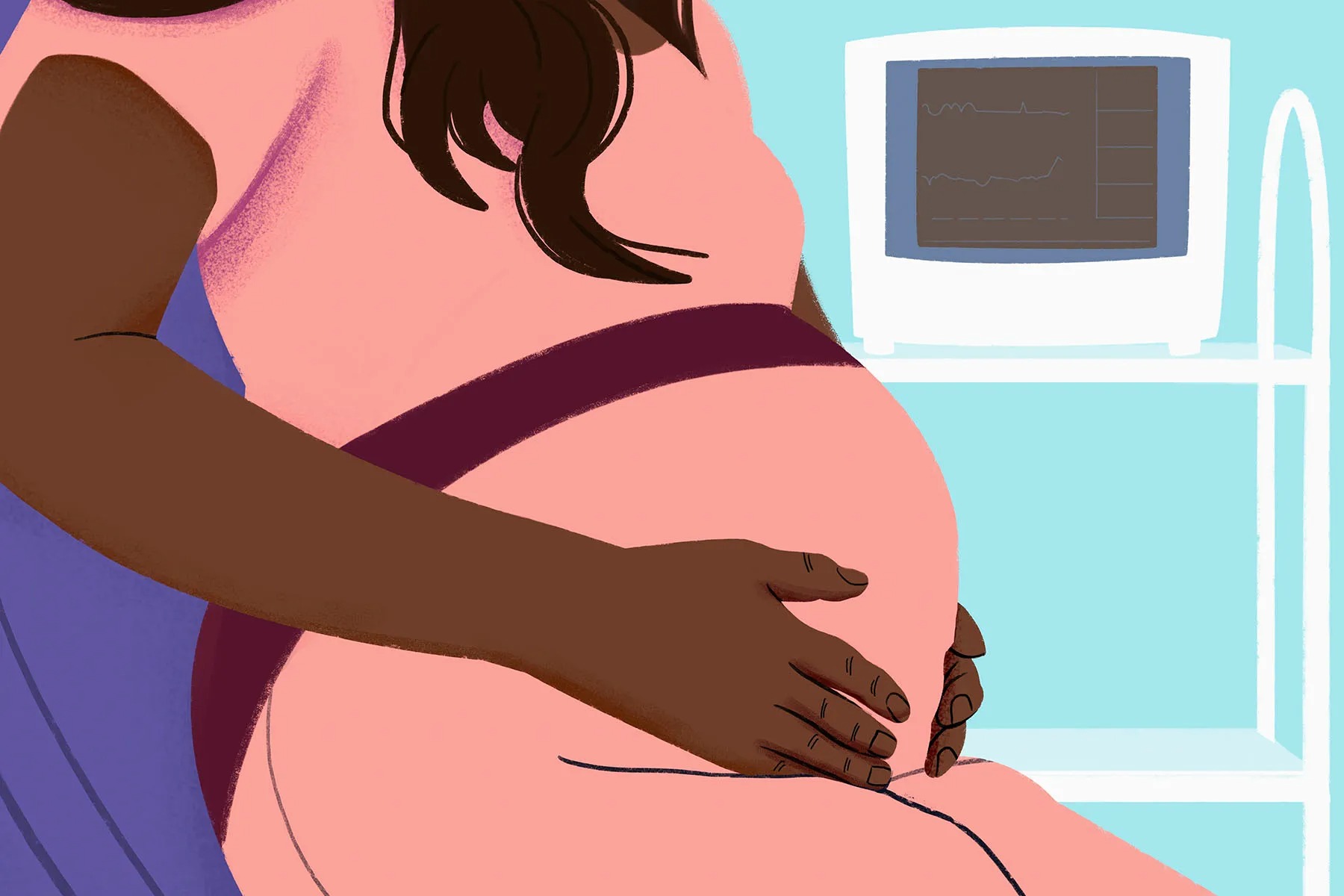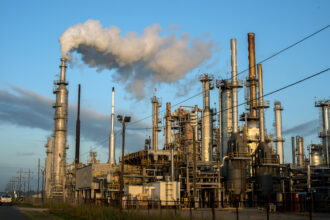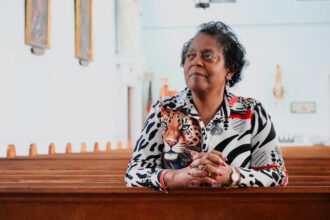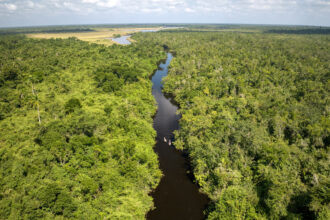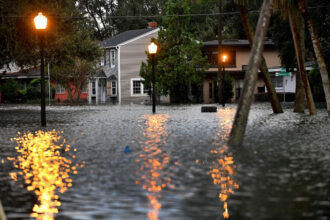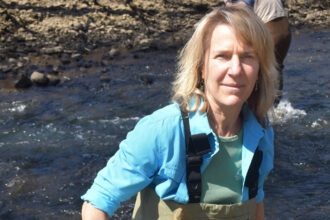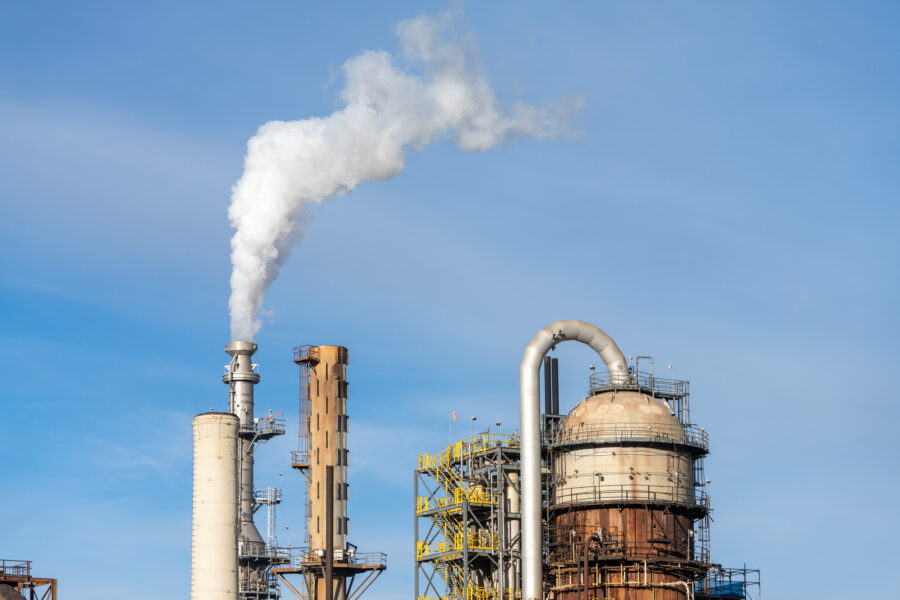Originally published by The 19th.
All three of Ashley Gaignard’s children were born preterm and at low birth weights. It was a fact that Gaignard didn’t think about much at the time — her children are now in their twenties — because it felt so common among her friends and family.
“I thought that maybe because I was tiny and petite that I would have small babies,” she said.
But she did notice a pattern: Her mom had small babies, so did her siblings. People in her family also had difficult pregnancies, with one of her siblings experiencing a miscarriage and another experiencing life-threatening complications during her labor.
While genetics could play a role, there was another possibility that Gaignard hadn’t considered: her environment.
Gaignard is a lifelong resident of Louisiana’s Ascension Parish. The part of the state where she lives is colloquially known as Cancer Alley, named for the cancer-causing chemicals emitted from the over 200 petrochemical plants and refineries that dot the Mississippi River. Those who live in the most polluted parishes are disproportionately Black and low income.
Until recently, no one had ever studied the correlation between toxic air pollution in the state of Louisiana and poor birth outcomes. A study published last week, in the peer-reviewed journal Environmental Research Health, for the first time looked at the association between toxic air pollution and low birth weight and preterm birth in the state of Louisiana.
It shows that in severely polluted census tracts, residents have a 25 percent higher risk of low birth weight and a 36 percent higher risk of preterm birth versus people in unpolluted tracts. Louisiana and Mississippi have the highest rates of low birth weight and preterm birth in the country, and this new evidence suggests industrial pollution could play a role.
Around a third of Louisiana’s cases of low birth weight and about half of the cases of preterm birth each year could be linked to air pollution exposure, said Kimberly Terrell, lead author of the study and research scientist at the Tulane Environmental Law Clinic.
The study used birth records from the Louisiana office of vital records and pollution data from the Environmental Protection Agency to draw correlations between air pollution and adverse birth outcomes.
“On the one hand, it shouldn’t really be surprising because there’s a lot of research out there that’s already made this connection in other areas,” Terrell said. “So it’s not earth-shattering, but it surprised me what a big proportion of cases was linked to air pollution.”
While the study couldn’t prove a direct causation, something that would require exposing pregnant people intentionally to a hazard and comparing those results to a control group, it is strong evidence of a correlation, Terrell said.
Jun Wu, a professor at the University of California, Irvine, who studies the impacts of environmental exposure on reproductive outcomes, said the research stood out to her for the population it covered. There haven’t been many studies that look at industrial emissions and pregnancy outcomes in this area, where there are also higher Black populations. She was surprised by the lack of research.
In addition to examining industrial air pollution, the study also found that census tracts with concentrated poverty in Black communities experienced 53 percent and 34 percent higher risks of low birth weight and preterm birth, respectively.
Wu would like to see researchers follow up with more studies on other conditions like birth defects or childhood cancer.
“Air toxins also have been shown to be related to increased risk of birth defects, but the data for the birth defects are harder to get,” Wu said.
Pre-publication, data from the Louisiana study was also included in a recent report produced by international nonprofit Human Rights Watch on Cancer Alley’s health impacts on residents.
Antonia Juhasz, senior researcher at the organization, interviewed residents including Gaignard as part of her report, asking specifically about their experiences with pregnancy and reproductive health.
“They rarely get asked about their unique health situations … all of which have been documented to be impacted by living near fossil fuel petrochemical operations,” Juhasz said. “It’s everything from infertility, to [impact to] menstrual cycles to miscarriage, stillbirth, low birth weight, preterm birth.”
Anecdotally, Juhasz said high-risk pregnancies were also very common. Of the 37 residents she interviewed, only one person was aware that there was research showing a link between pollution and poor birth outcomes, which Juhasz said shows a need for better education of health care providers in the region.
The report ultimately points out that the onus for improving health outcomes falls on state officials, policymakers and industry to reduce the amount of harmful pollutants residents in the area are being exposed to.
“These are problems with solutions,” Juhasz said. “You can regulate to reduce exposure to harmful pollutants. You can eliminate exposure to these harmful pollutants by transitioning away from fossil fuels as rapidly as possible.”
Residents like Gaignard aren’t waiting for that to happen. In response to the harms of Cancer Alley, Black women in particular have stepped up to advocate for their community’s health, including Sharon Lavigne, who has won multiple awards for her environmental justice activism and Jo and Joy Banner, sisters who have worked on land preservation in the region.
This story is funded by readers like you.
Our nonprofit newsroom provides award-winning climate coverage free of charge and advertising. We rely on donations from readers like you to keep going. Please donate now to support our work.
Donate NowGaignard founded her own organization, Rural Roots Louisiana, a nonprofit that teaches kids about environmental and social justice, and bought a piece of land in the hopes of preventing it from being developed into yet another harmful facility.
“I think we need to restore the land and show the industry that we are here,” she said. “I want to teach a whole new generation. If we can reach these kids at 13, 14, 15 and get them involved now, we’ll create a whole other generation of awareness of social and environmental justice.”
Learning about the reproductive health impacts of the toxins in the air has been yet another motivator for her work.
“It put the fight in me to push harder to protect other younger women and to bring knowledge. You have some girls going to work in the plants pregnant,” she said. “The education and awareness is needed.”
